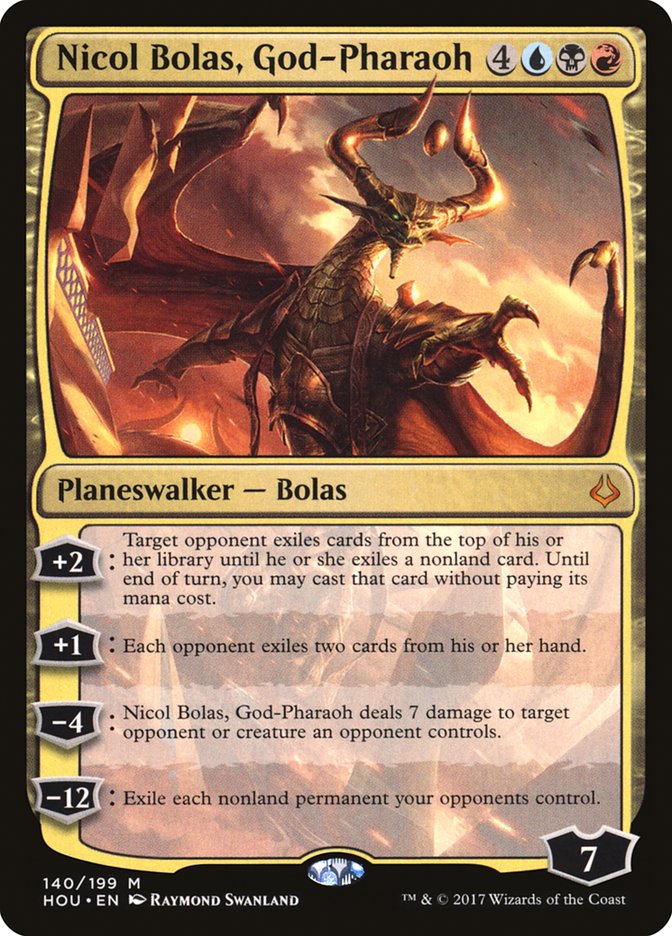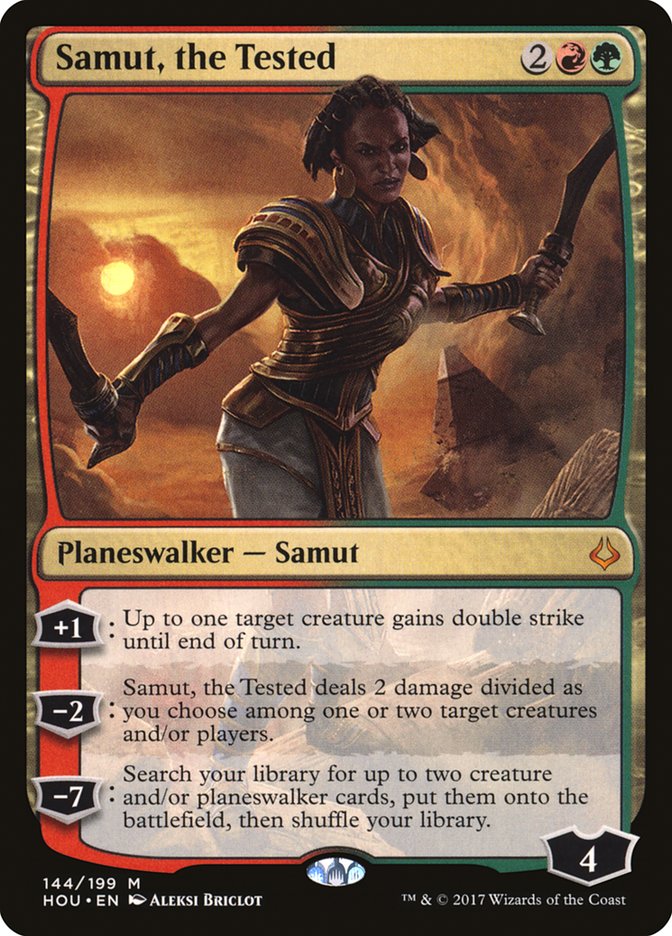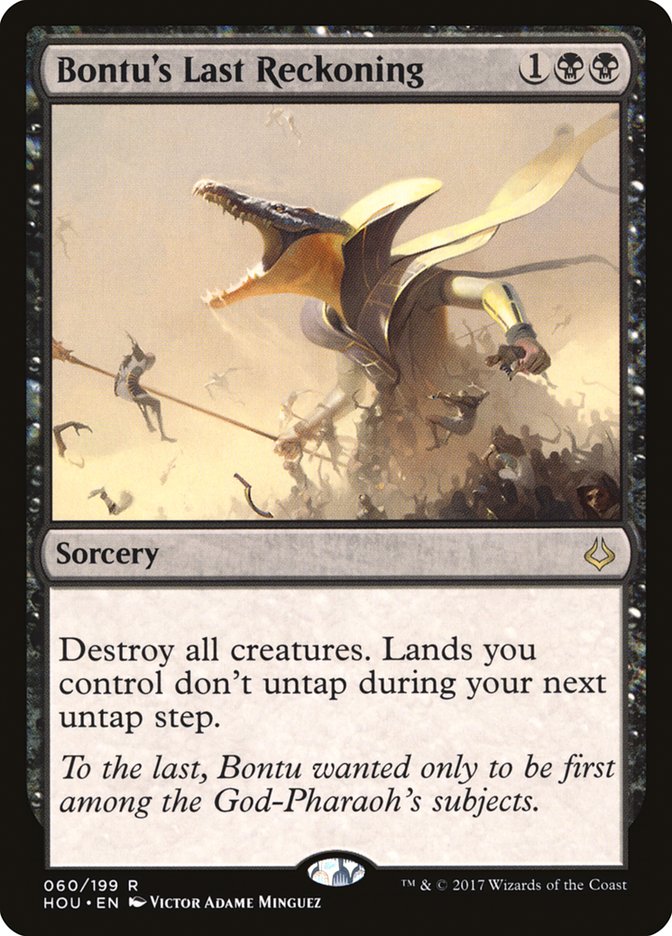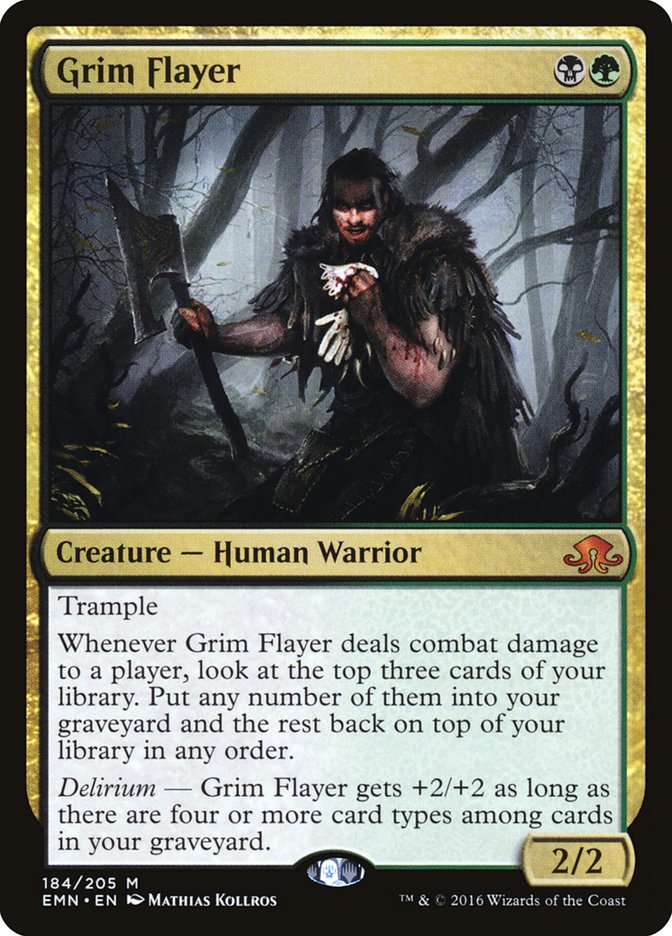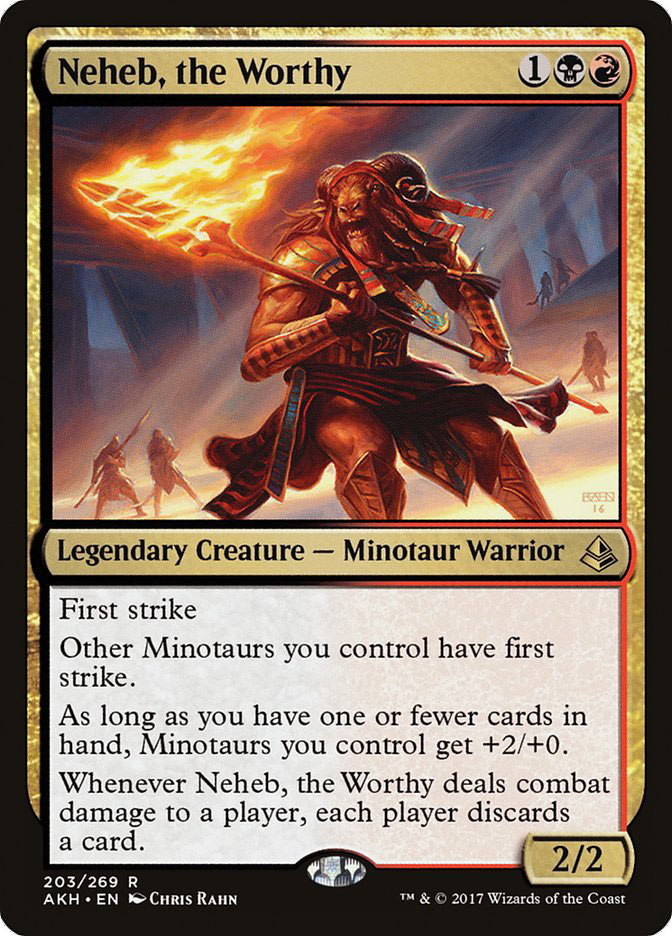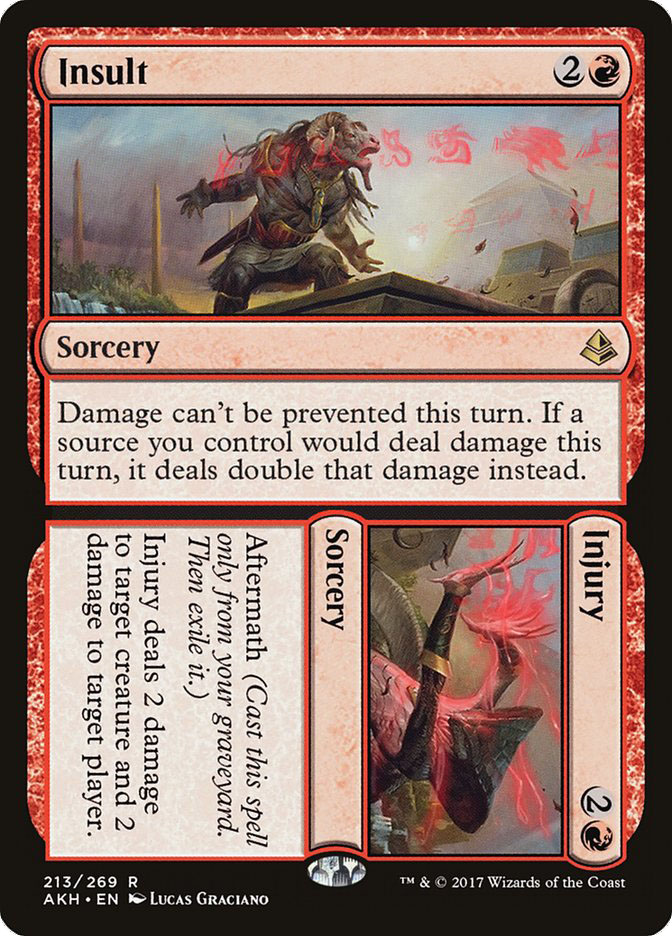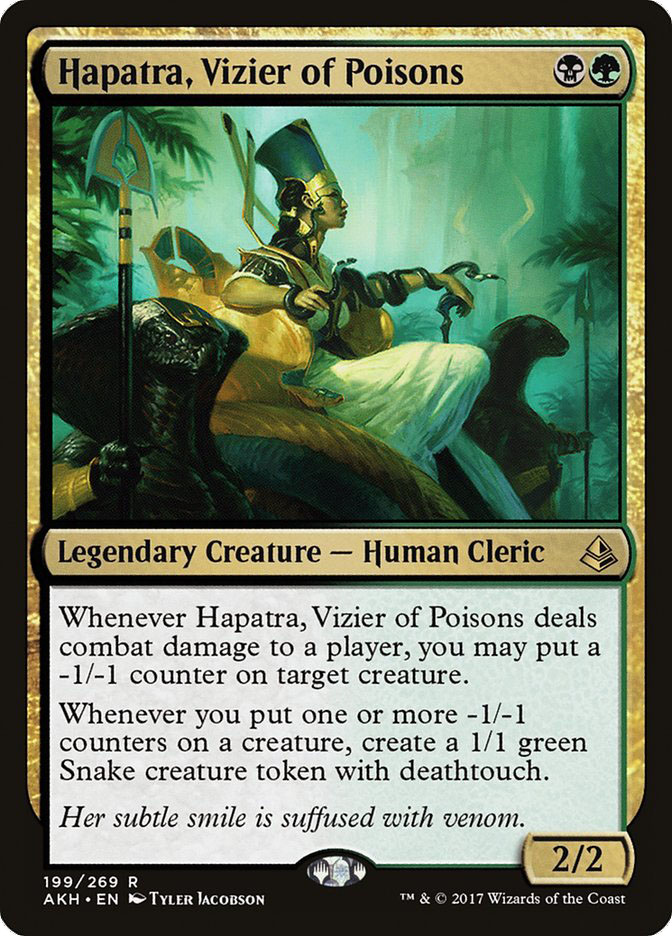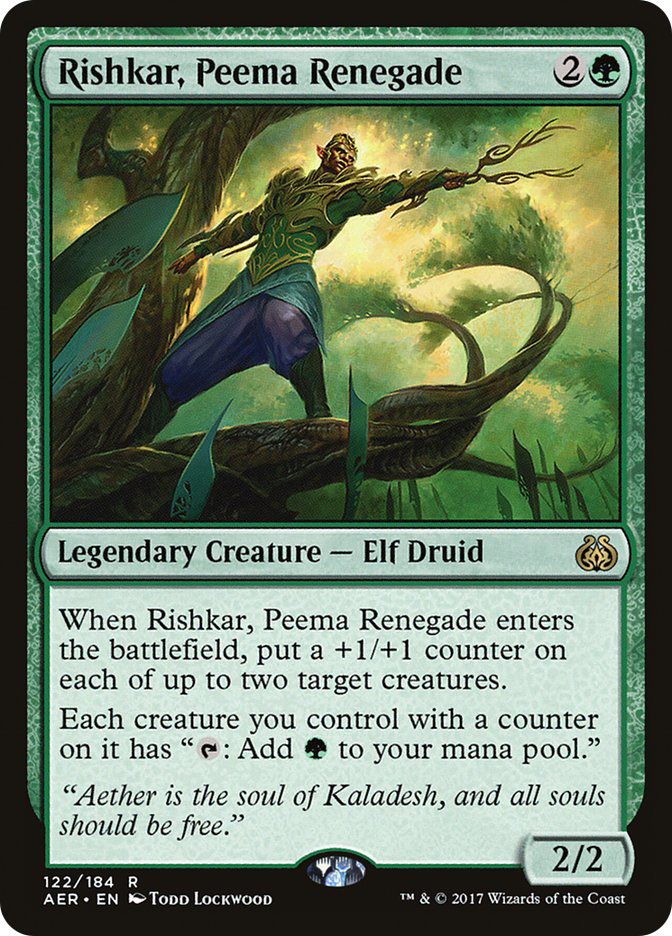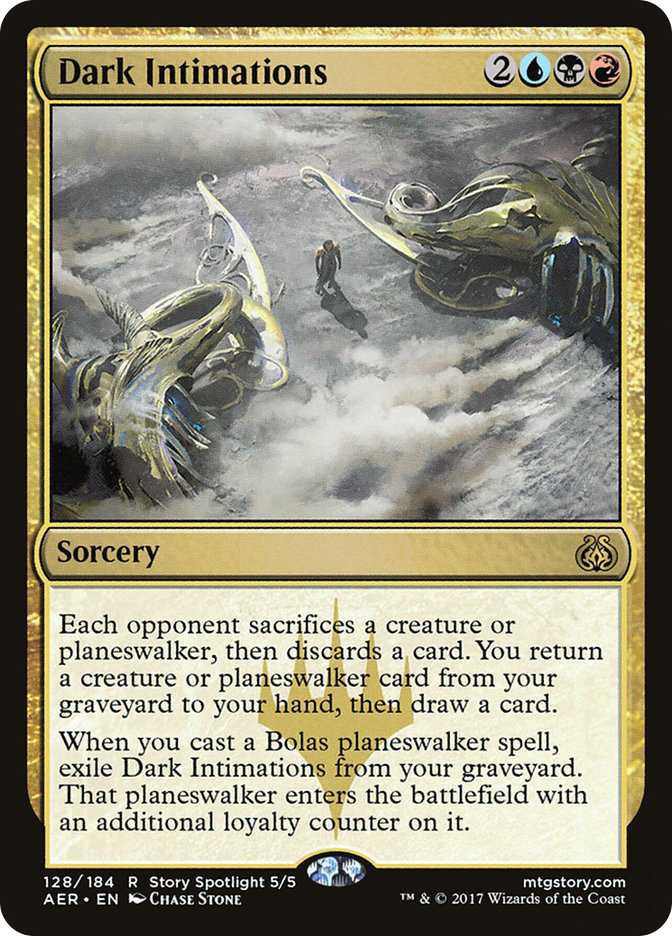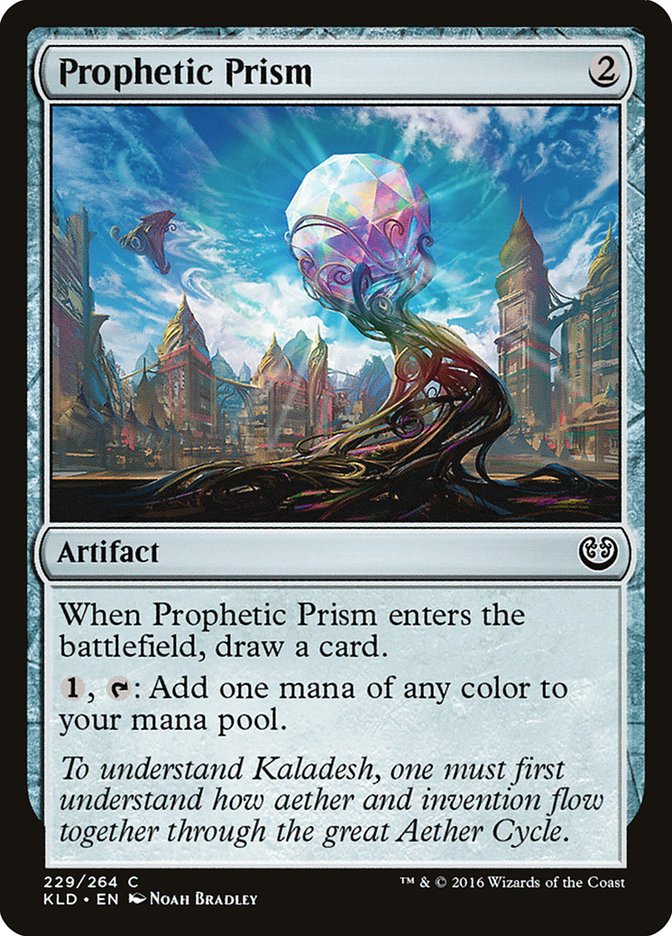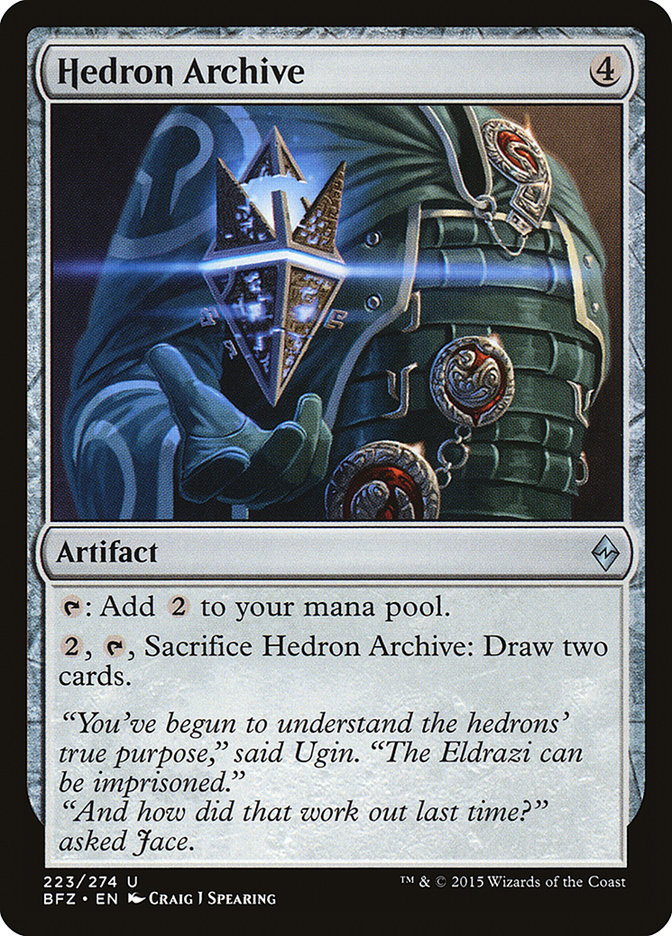Last Thursday, Cedric Phillips shared some early cards from Hour of Devastation, and they were doozies: two planeswalkers and a rare, undercosted, and unconditional sorcery sweeper. While there’s usually just been one card in an early preview that’s caught my eye, all three had me brewing the moment Cedric shared them with the class.
In the two-set block design, the second set follows up on implicit promises made by the first set, either literally or thematically. I’m hoping that more embalm and cycling appear in Hour of Devastation to keep the continuity with Amonkhet, as well as providing more fuel for build-around-me cards like Embalmer’s Tools and New Perspectives. As is usually the case, this means iterations of these familiar mechanics as well as a twist on an old one, or something new entirely. It’s interesting, and likely smart, that these previews contain no particular hint at the design of the set itself; independently, each of these cards is powerful in its own right, especially for the brewer in us all.
Testing Samut
First, let’s look at what might some might call the least controversial of the three: Samut, the Tested.
We’ve seen this movie a few times now: a solid, four-mana planeswalker in two colors that appears with some interesting callbacks to spells we’ve seen in the past with a random ultimate that should put you even farther ahead than you already are if you’ve had an undisturbed planeswalker for twelve turns or whatever. To put the brakes on the hype train, I think Samut, the Tested is no different than promising, but ultimately low-impact four-mana planeswalkers we’ve seen recently (see: Dovin Baan; Kiora, Master of the Depths; Chandra, Torch of Defiance; and Arlinn Kord). I wouldn’t even be super-excited to pull this in a draft. Nevertheless, Samut, the Tested has some interesting synergies with all three of its abilities, and I’m a big fan of it despite its potential towards mediocrity.
Three different cards came to mind when I read Samut, the Tested.
Double strike is a strange ability to use when your opponent knows it is coming. Regardless, a creature with double strike moves up on the blocking priority list, as that’s twice as much damage blocked as normal if you can chump block it. In the case of these two creatures, double strike is better than normal, thanks to their own innate forms of evasion and some solid “saboteur” triggers that occur when dealing combat damage to a player. Grim Flayer’s trigger can take him from a dull 2/2 to an intimidating 4/4 that, with double strike, can deal eight damage and can alter your draws for the next six turns. Neheb, the Worthy is a bit the opposite. Hitting with double strike gets you closer both to delirium and to its own power boost. For those of you who haven’t read Neheb, the Worthy lately, all Minotaurs get a power boost if your hand size is low, itself included. This little three-drop starts hitting for eight once you’ve got a small hand and an on-curve Samut, the Tested.
Jund’s always a fan favorite, and I’m happy to fan that flame. Wait, wrong “fan?” Ehh, oh well. Hype fire.
Creatures (14)
- 1 Drana, Liberator of Malakir
- 1 Mournwillow
- 4 Grim Flayer
- 2 Rishkar, Peema Renegade
- 2 Maulfist Revolutionary
- 2 Hapatra, Vizier of Poisons
- 2 Neheb, the Worthy
Planeswalkers (6)
Lands (23)
Spells (17)

This Jund deck with a counter subtheme seems like a fun, although perhaps suboptimal way, to leverage Samut, the Tested. Hapatra, Vizier of Poisons has been on my list of “cards to try from Amonkhet,” but I think it finally gets over the hump for this deck, mostly because I like its ability to kill an X/2 and generate two 1/1 Snakes if it gets through. Double strike means two triggers! Grim Flayer is still the deck’s workhorse, getting you closer to delirium by itself, and it benefits from double strike thanks to trample. Maulfist Revolutionary, an overlooked uncommon beatstick from Aether Revolt, can roll up loyalty counters, +1/+1 counters, or -1/-1 counters in this deck.
The spells give us the right blend of instants, sorceries, enchantments, and planeswalkers to make delirium possible and keep the deck alive as long as possible to get a solid Samut, the Tested pairing going. Liliana, the Last Hope keeps at least one creature ready to roll, and her +1 means effectively blocking a double strike creature is nearly impossible. Autumnal Gloom seems like a great clock, especially with a power boost from Arlinn Kord or Rishkar, Peema Renegade. Once it’s flipped, it can’t be targeted by Ulamog, the Ceaseless Hunger, and that’s not nothing!
While the deck is a bit gimmicky, I think it’s important to acknowledge that Samut, the Tested is going to be a bit underpowered without the right fuel; it’s more conditionally powerful based on the rest of your deck, unlike something like Gideon, Ally of Zendikar, which is probably the best standalone four-drop in Standard at most any point in the game.
May His Return Come Quickly
It’s no mystery that everyone’s been thinking about one thing since seeing hints of his return since Amonkhet was first revealed: Nicol Bolas’s return.
It’s crazy to think that, despite Nicol Bolas’s ubiquitous presence in the Magic universe, he’s only been represented directly through two previous cards, and only one of them was a planeswalker. We’ve been waiting a long time to see the Elder Dragon reappear in new form, nearly ten years after Conflux released in 2008—though he’d also show up in Magic 2013.
So what’s the verdict? Well, it’s hard to say; planeswalkers with four abilities have a convincing precedent for power. Chandra, Torch of Defiance and Jace, the Mind Sculptor are undeniably powerful in the abstract, but what about big Nicky?
His +2, while effective in gaining loyalty counters, is a bit of a crapshoot. You could hit Ulamog, the Ceaseless Hunger, or you could hit Attune the Aether. The +1 feels a lot like Karn Liberated’s +4, and his ability synergized with his ultimate. That being said, two cards every turn getting ripped out of your hands is terrifying.
Nicol Bolas, God-Pharaoh has a decent minus, smacking your opponent or their most formidable creature right away. Seven is a lot of damage to the face. His ultimate is undeniably backbreaking, but it does not win you the game by itself in the same way that Nicol Bolas, Planeswalker’s ultimate could. It’s as powerful a Plague Wind as Standard can muster, but getting twelve loyalty counters will be tough.
Or is it?
Bet you forgot about that little diddy, huh? Waiting in the wings, planted in Aether Revolt, Dark Intimations finally has its other half. Even before Nicol Bolas, God-Pharaoh was previewed, four months ago, in fact, I worked with Dark Intimations sans Nicky, just looking at its pre-Bolas impact. Now that we’ve got its eponymous planeswalker, how can we leverage this color-matched sorcery and its specific boost to our planeswalker?
In February, I tried to work it around as a Brain in a Jar deck, another pet card from Shadows over Innistrad. With Amonkhet under our belt, we have a couple of new tools to break Brain in a Jar open.
Moreover, we have a new spell that benefits.
Most people are considering the presence of an unconditional Wrath of God for one less mana to be overblown because of its incredibly steep cost, locking down your lands for a turn. However, Brain in a Jar is a fun way to get around that, letting you cast it early in Brain in a Jar’s life and inconveniencing yourself as little as possible. In an ideal world, you’re casting it on the end step, locking down one land for the untap step you’re about to experience and freeing up your next turn to play as normal. In previous iterations of Brain in a Jar, having access to an instant-speed Wrath at full cost (five mana or more) turned out to be brilliant; getting to it earlier gives the deck more survivability.
Brain in a Jar plays well with another Amonkhet card that has “combo” written all over it: Vizier of Tumbling Sands.
With the Vizier, you’re getting the Brain in a Jar up and running more quickly, drawing more cards to interact with the Jar. Moreover, with Dark Intimations, you can put it back in your hand to have more fun with it; a deck that uses Brain in a Jar won’t likely have many creatures to work with, so you need to have some reasonable targets.
Where does that leave us when we mush these concepts together?
Creatures (4)
Planeswalkers (6)
Lands (25)
Spells (25)

The deck fairly cleanly explains itself; while there’s a clear focus on instants and sorceries to go with Brain in a Jar, the other critical component is Chandra, Torch of Defiance. An on-time Chandra, Torch of Defiance and a fifth land will put you squarely in Nicol Bolas, God-Pharaoh territory. She applies pressure herself, too, and together, she and Nicol Bolas, God-Pharaoh can make quick work of your opponent’s life total. Even if you have to cast Bontu’s Last Reckoning normally and suffer the penalty, you’ll still be fine as long as you’ve got a planeswalker working in your off-turn.
Brain in a Jar is fine and all, but there’s another way to get around Bontu’s Last Reckoning: using nonlands to cast it.
If your main mana source is artifacts, you can work with Bontu’s Last Reckoning and its penalty without as much of a problem. Hedron Archive acts like Chandra, Torch of Defiance, giving you a leap from turn 4 to turn 5. The mana might, strangely, be much easier in an artifact-based scenario, as several other options open up to help.
Why not? Let’s take a look and see where we land.
Creatures (3)
Planeswalkers (7)
Lands (24)
Spells (26)

This deck takes a bit of a different approach, aiming to keep the battlefield clear with counterspells, mass removal, and sticking singular threats while not giving up time. It uses Dark Intimations to remove threats from the battlefield and hand while staying a step ahead. The three copies of Herald of Anguish keep your opponent’s hand slim so Nicol Bolas, God-Pharaoh can resolve and tick up unencumbered by removal.
The artifact package is designed to promote consistency in mana and in sequencing, and the planeswalker base gives a broad range of options when you’re ready to go for the kill. There are a couple of cute interactions, too: Saheeli Rai can copy Herald of Anguish and then, at the end step, you can stack the triggers so your opponent will discard a card from the copy before it disappears!
The quality of Hour of Devastation’s cards seen so far will depend on the power of the rest of the set, as well as where the format will go beyond that. Will Aetherworks Marvel have a new friend after Ulamog, the Ceaseless Hunger rotates? Will a new card in Hour of Devastation make Aetherworks Marvel unplayable? With official previews starting in the next couple of weeks, we’ll find out for sure. This is a strong start, and I’m inspired to give these three new spells a try!
Surely I’m not the only one who’s pumped about the new planeswalkers and the promise of an incredibly inexpensive sweeper. What are your thoughts? In what ways are you planning to use the God-Pharaoh and his minions?


